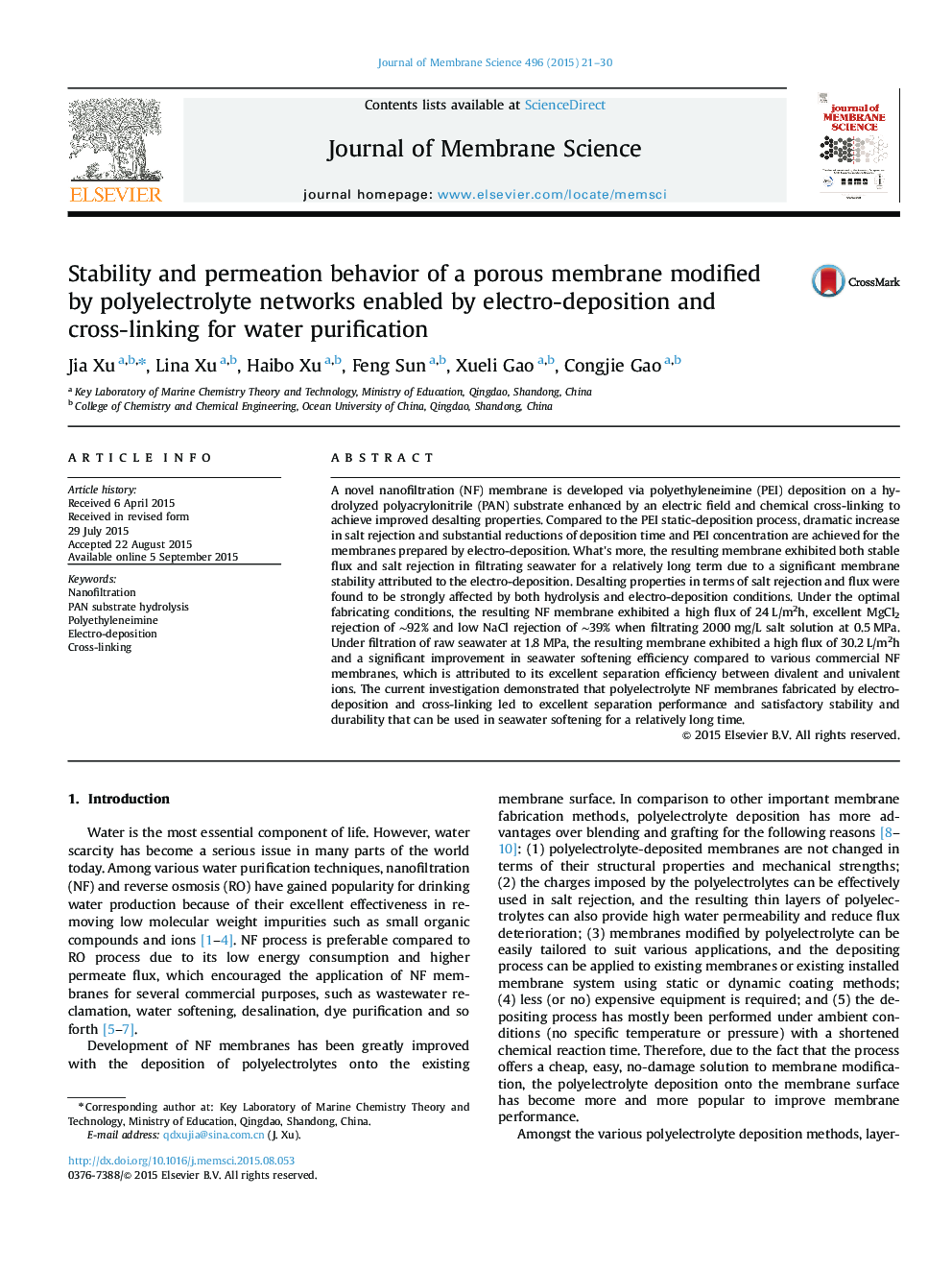| Article ID | Journal | Published Year | Pages | File Type |
|---|---|---|---|---|
| 632846 | Journal of Membrane Science | 2015 | 10 Pages |
Abstract
A novel nanofiltration (NF) membrane is developed via polyethyleneimine (PEI) deposition on a hydrolyzed polyacrylonitrile (PAN) substrate enhanced by an electric field and chemical cross-linking to achieve improved desalting properties. Compared to the PEI static-deposition process, dramatic increase in salt rejection and substantial reductions of deposition time and PEI concentration are achieved for the membranes prepared by electro-deposition. What's more, the resulting membrane exhibited both stable flux and salt rejection in filtrating seawater for a relatively long term due to a significant membrane stability attributed to the electro-deposition. Desalting properties in terms of salt rejection and flux were found to be strongly affected by both hydrolysis and electro-deposition conditions. Under the optimal fabricating conditions, the resulting NF membrane exhibited a high flux of 24Â L/m2h, excellent MgCl2 rejection of â¼92% and low NaCl rejection of â¼39% when filtrating 2000Â mg/L salt solution at 0.5Â MPa. Under filtration of raw seawater at 1.8Â MPa, the resulting membrane exhibited a high flux of 30.2Â L/m2h and a significant improvement in seawater softening efficiency compared to various commercial NF membranes, which is attributed to its excellent separation efficiency between divalent and univalent ions. The current investigation demonstrated that polyelectrolyte NF membranes fabricated by electro-deposition and cross-linking led to excellent separation performance and satisfactory stability and durability that can be used in seawater softening for a relatively long time.
Related Topics
Physical Sciences and Engineering
Chemical Engineering
Filtration and Separation
Authors
Jia Xu, Lina Xu, Haibo Xu, Feng Sun, Xueli Gao, Congjie Gao,
